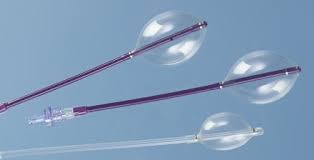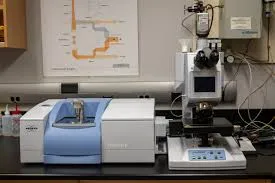What is a Balloon Catheter?
A balloon catheter is a special medical device used in many important procedures such as angioplasty, pregnancy induction, and uterine treatments. It is a thin, flexible tube with a balloon at its tip. This balloon can be inflated or deflated to open blocked vessels, widen narrow passages, or gently apply pressure inside the body.
Table of Contents
What is a Balloon Catheter Used For?
Balloon catheters are used in several important medical conditions:
- Angioplasty: To open blocked or narrowed blood vessels in the heart.
- Pregnancy & Labor Induction: To dilate the cervix naturally before labor.
- Uterus Treatments: To stop bleeding or manage certain uterine conditions.
- Urology: To manage blockages in urinary passages.
- General Surgery: To temporarily block or expand body passages.
👉 In simple words, balloon catheters are like mini tools that help doctors open, close, or support body passages in different treatments.
Balloon Catheter Procedure
1. Balloon Catheter in Angioplasty
- Inserted into a blocked artery through a small cut in the groin or wrist.
- The catheter reaches the heart’s blocked artery.
- The balloon inflates to push plaque against the artery wall.
- This restores blood flow and relieves chest pain or heart attack risk.
2. Balloon Catheter in Pregnancy (Induction)
- A balloon catheter is placed in the cervix to help it soften and dilate.
- The balloon is filled with sterile water to gently press on the cervix.
- Helps trigger the natural labor process.
3. Balloon Catheter in Uterus Treatments
- Used to control heavy bleeding after childbirth or surgeries.
- Provides temporary tamponade effect until bleeding stops.
Types of Balloon Catheters
- Angioplasty Balloon Catheters
- Used in heart procedures.
- High-pressure balloons.
- Uterine Balloon Catheters
- Used for pregnancy induction and postpartum bleeding.
- Urinary Balloon Catheters (Foley Catheter with Balloon)
- Keeps catheter in place inside the bladder.
- Specialty Balloons
- Cutting balloon catheters (with blades to cut plaque).
- Drug-eluting balloon catheters (release medicine into arteries).
👉 Each type has its own balloon catheter size depending on the procedure.
Balloon Catheter Indications
Doctors recommend balloon catheters in cases like:
- Heart blockages (angioplasty)
- Pregnancy induction when overdue
- Postpartum hemorrhage
- Urinary blockage
- Blocked or narrowed blood vessels in other body parts
Balloon Catheter Price & Best Cost
The cost of balloon catheters varies based on type, brand, and country.
| Type | Average Price (India) | Average Price (US) |
|---|---|---|
| Angioplasty Balloon Catheter | ₹12,000 – ₹35,000 | $2,000 – $4,000 |
| Uterine Balloon Catheter | ₹3,000 – ₹10,000 | $500 – $1,000 |
| Urinary Balloon Catheter | ₹500 – ₹2,000 | $100 – $300 |
👉 In India, generic balloon catheters are more affordable compared to international brands.
How Painful is a Balloon Catheter?
- Angioplasty Balloon Catheter: Mild chest discomfort during inflation but usually not painful due to anesthesia.
- Pregnancy Balloon Catheter: Can cause cramps or discomfort, but pain is usually tolerable.
- Urinary Balloon Catheter: Slight discomfort when inserted but usually manageable.
What is the Balloon of a Catheter?
The balloon is a soft inflatable part at the catheter’s tip.
- In angioplasty, it pushes plaque aside.
- In pregnancy, it presses the cervix to induce labor.
- In urinary catheter, it holds the tube inside the bladder.
👉 The balloon is filled with sterile water or air, depending on the procedure.
Advantages of Balloon Catheters
- Minimally invasive procedure.
- Faster recovery compared to open surgery.
- Effective in both emergency and planned treatments.
- Can be combined with stents or drug delivery.
Risks & Complications
While balloon catheters are generally safe, some risks may include:
- Infection at the site of insertion.
- Bleeding or bruising.
- Pain or cramping.
- In rare cases, artery damage or rupture.
👉 Doctors always evaluate risks vs. benefits before recommending balloon catheters.
Balloon Catheter Sizes
- Angioplasty catheters: 1.5 mm to 5 mm diameter.
- Pregnancy induction catheters: 14–18 French size.
- Urinary balloon catheters: 5–30 ml balloon volume.
Balloon Catheter vs Other Catheters
| Aspect | Balloon Catheter | Normal Catheter |
|---|---|---|
| Has balloon? | Yes | No |
| Uses | Angioplasty, pregnancy, bleeding control | Mainly drainage |
| Cost | Higher | Lower |
| Comfort | May cause discomfort | Usually less painful |
FAQs on Balloon Catheter
Q1. What is a balloon catheter used for?
It is used for angioplasty, pregnancy induction, uterine bleeding control, and urinary blockages.
Q2. How painful is a balloon catheter?
It may cause mild to moderate discomfort depending on the type, but pain is usually tolerable.
Q3. What is the balloon of a catheter?
It is the inflatable tip that helps in opening, pressing, or holding a passage.
Q4. What is the cost of a balloon catheter?
In India, prices range from ₹500 to ₹35,000 depending on type and brand.
Q5. Is balloon catheter safe during pregnancy?
Yes, it is a safe and common method to induce labor under medical supervision.
Q6. How long does a balloon catheter stay inside?
- Pregnancy: 12–24 hours.
- Angioplasty: Only during procedure.
- Urinary: As per doctor’s advice (few hours to days).



